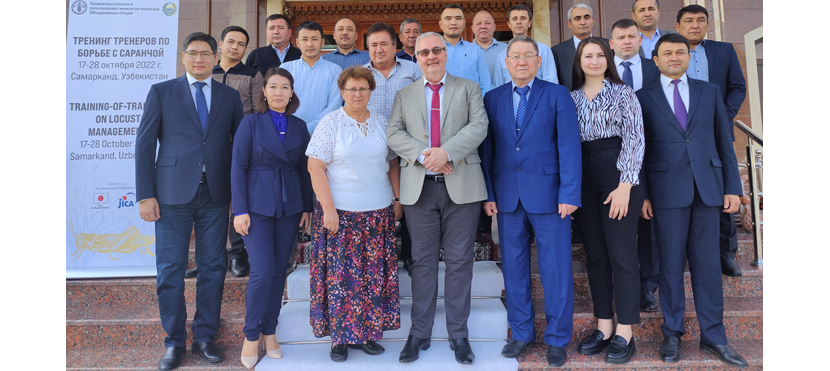On 17-21 October 2022 the Food and Agriculture Organization of the United Nations (FAO) organized the Training of Trainers on locust monitoring and information management under the scope of the JICA/Japan funded project “Improvement of locust management in Central Asia” (Phase 2). The training is conducted by Alexandre Latchininsky, Agricultural Officer (Locust management), member of the FAO “Locusts and Transboundary Plant Pests and Diseases” Team and Nadiya Muratova, FAO Geographical Information System (GIS) Specialist.
Locusts are known to pose a serious threat to agriculture and food security globally. According to the FAO, even a medium-sized swarm of locusts can destroy as many crops as would be enough to feed two and a half thousand people for a year.
The training is held to master best foreign practices and innovations on locust management to improve the skills of stakeholders for further dissemination of knowledge and wide introduction of new approaches and technologies. The event brought together representatives of relevant institutions from Kazakhstan, Kyrgizstan, Russia, Tajikistan, Turkmenistan and Uzbekistan. During the trainning they learn a lot about capabilities of the Automated System for Data Collection (ASDC) and the Caucasus and Central Asian Locust Management System (CCALM).
“Introduction of the innovations, in particular, using GIS-technologies brought the locust management to a new level. The ASDC system is convenient for fast and efficient conducting of locust field surveys, as well as for monitoring of locust control using mobile devices. Improvement of the monitoring system will enhance early warning and timely response to the locust threat”, – Sherzod Umarov, Assistant FAO Representative in Uzbekistan highlighted in his opening speech.
The training presented history and spreading trends of locusts in Central Asia in the XXI century and guidelines on three main migrating types of locusts observed in the region: Italian Locust, Moroccan Locust and Asian Migratory Locust. Stakeholders were informed about the natural enemies of locusts and their role in population dynamics as well as about perspective agents for biological control of locusts as opposed to use of pesticides being harmful to environment. The training also focused on such issues as the climate change influence on locust plague, the usage of GIS-technologies and remote sensing methods for collecting and analysing information on locusts.
During the training the stakeholders learn main functions of the ASDC и CCALM systems making it possible to receive data on the locusts spreading online using mobile devices. The training agenda also includes field trips enabling the participants to apply knowledge on ASDC in practice.
